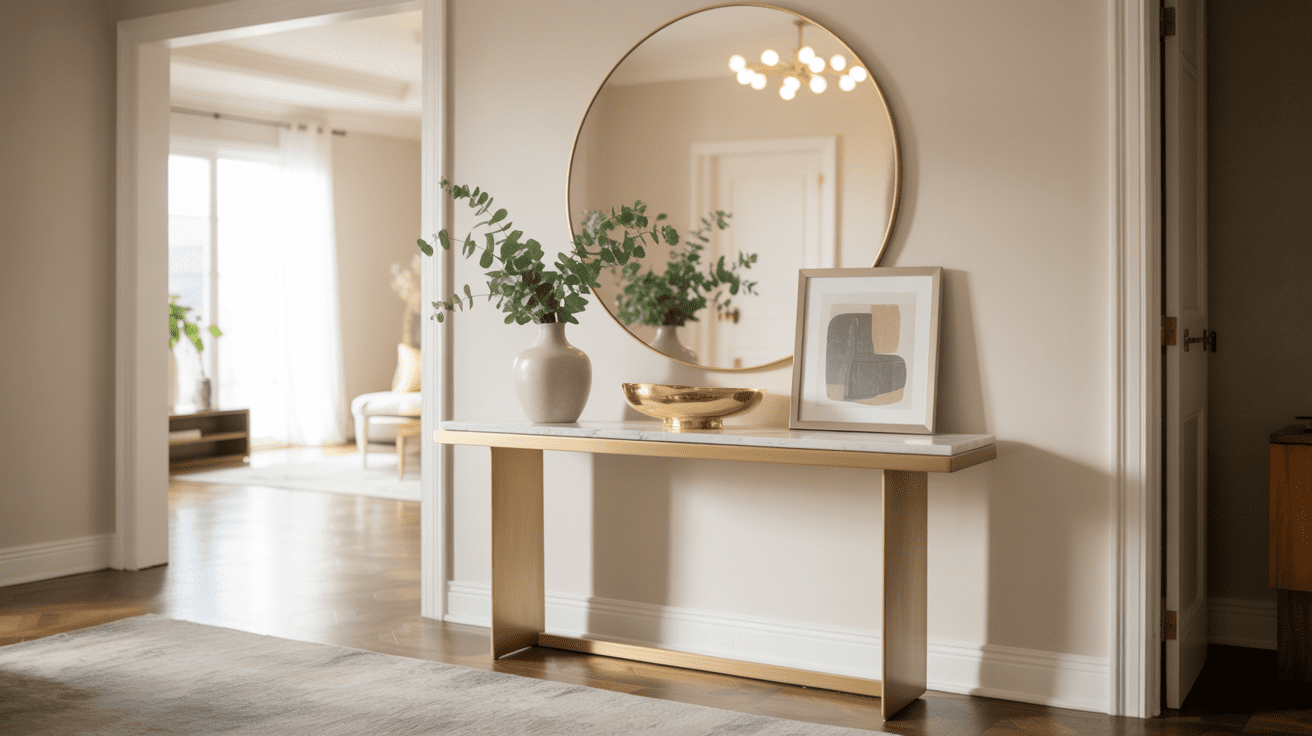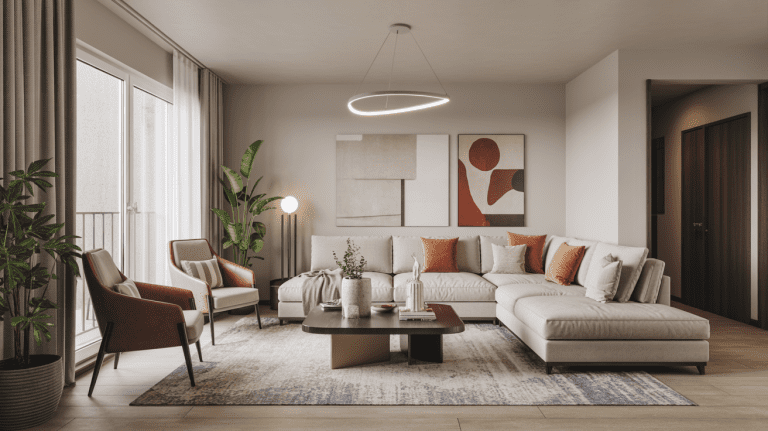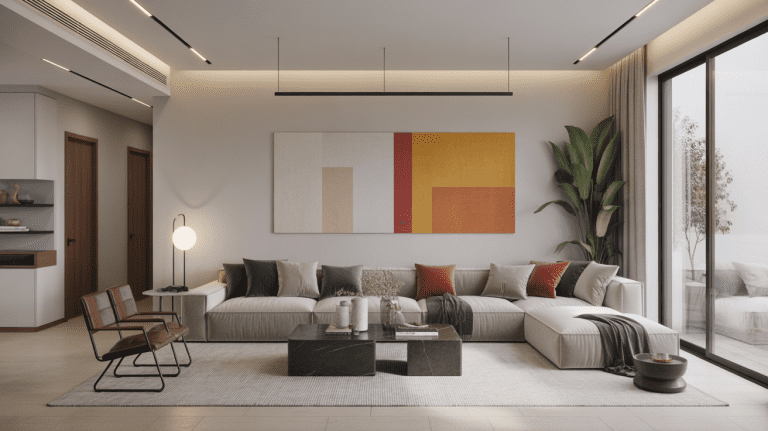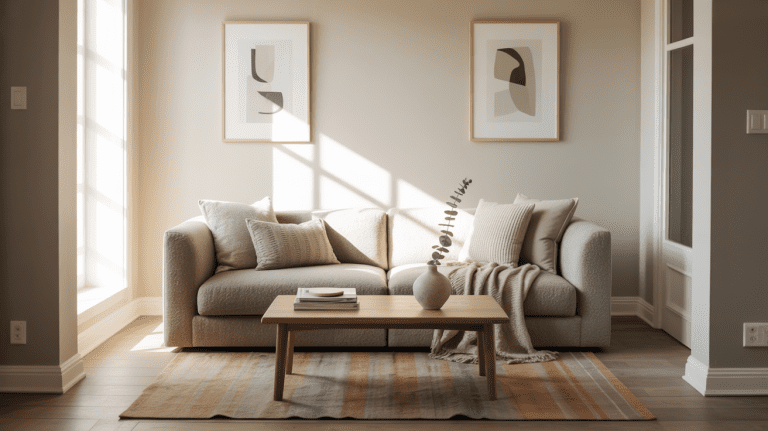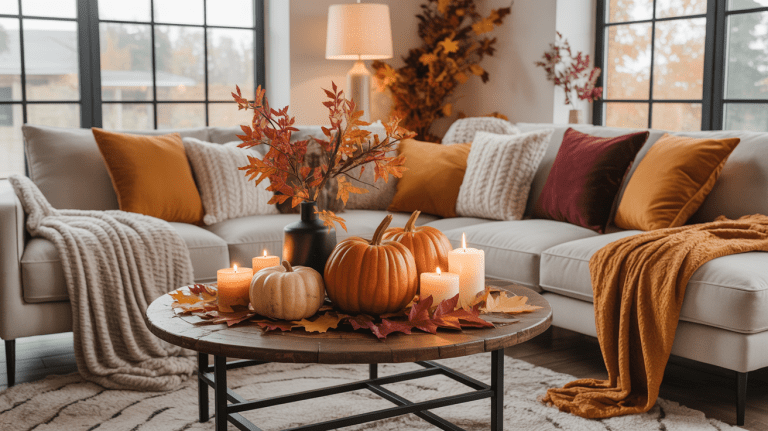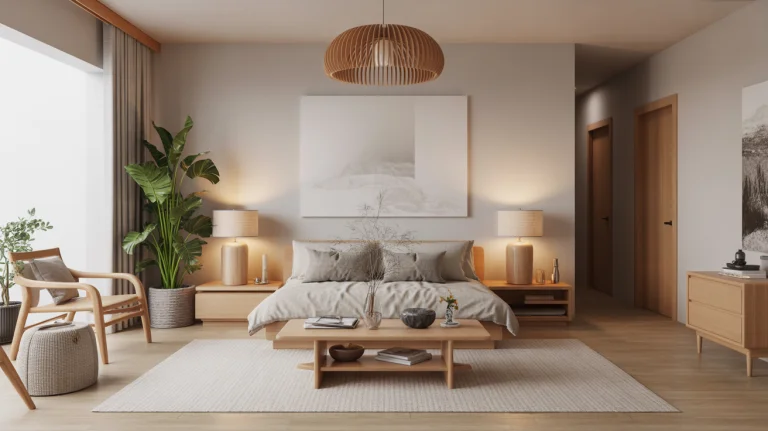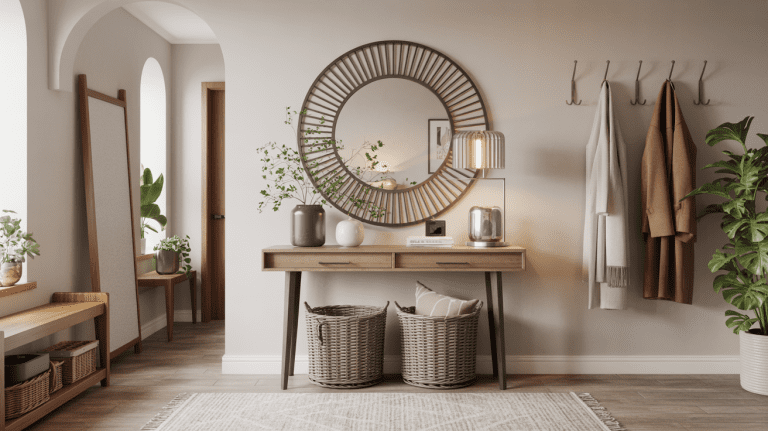15 Foyer Design Ideas: Create a Stunning First Impression for Your Home
Your foyer is the first space guests see when they enter your home, making foyer design one of the most important considerations in home decorating. A well-designed foyer sets the tone for your entire home while providing essential functionality for daily life. Whether you’re working with a grand foyer design or a compact entryway ideas space, these 15 foyer design concepts will help you create a welcoming and stylish entrance that makes a lasting impression.
The perfect foyer design balances aesthetics with practicality, offering storage solutions, proper lighting, and decorative elements that reflect your personal style. From traditional to modern foyer design approaches, these design ideas will transform your entrance into a beautiful and functional space that welcomes both family and guests.
1. Grand Statement Chandelier
Nothing makes a more dramatic first impression than a stunning chandelier in your foyer. A well-chosen light fixture serves as both illumination and art, creating a focal point that draws the eye upward and adds elegance to your entrance.
Choose a chandelier that’s proportional to your foyer size – larger spaces can accommodate more dramatic fixtures, while smaller areas benefit from more delicate designs. Consider the ceiling height when selecting your chandelier, ensuring there’s adequate clearance for people walking underneath.
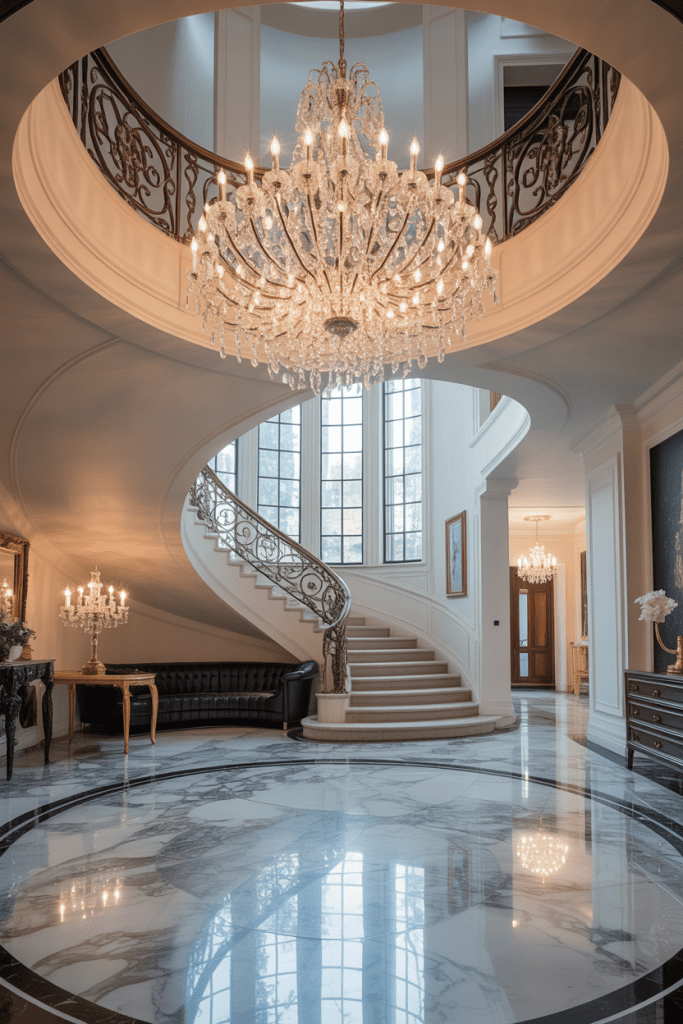
Crystal chandeliers work beautifully in traditional foyer design, while modern geometric designs complement contemporary homes. According to Better Homes & Gardens’ lighting experts, the right chandelier can increase a home’s perceived value by creating an impressive first impression. The key is choosing a fixture that complements your overall home style while making a memorable statement.
2. Console Table with Mirror Combination
A console table paired with a mirror above creates both functionality and visual appeal in your foyer design. This classic foyer design combination provides a surface for keys, mail, and decorative objects while the mirror reflects light and creates the illusion of more space.
Choose a console table that fits your foyer’s proportions – narrow spaces benefit from slim profiles, while wider areas can accommodate more substantial pieces. The mirror should be proportionally sized to the table, typically spanning about two-thirds of the table’s width.
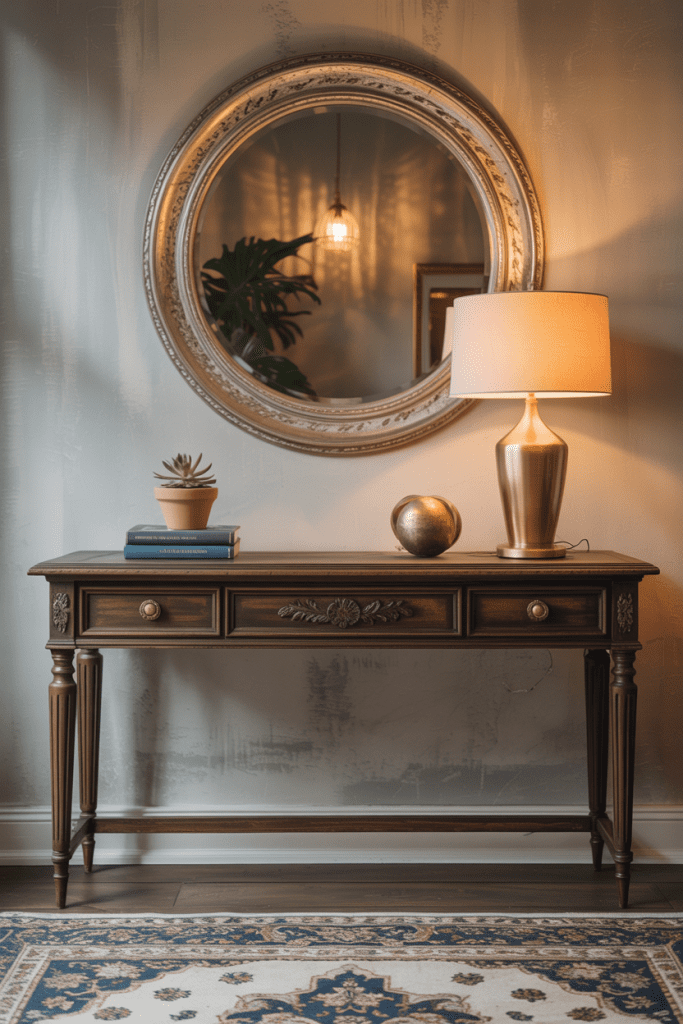
Style your console with a mix of practical and decorative items – a lamp for additional lighting, a small tray for keys, fresh flowers, and perhaps a few books or decorative objects that reflect your personality.
3. Built-In Storage Benches
Maximize your foyer design functionality with built-in storage benches that provide seating for putting on shoes while hiding away seasonal items, shoes, or other entrance essentials. This foyer design solution works particularly well in smaller foyers where every inch counts.
Design your storage bench with cushions or upholstery that complements your home’s color scheme. Include compartments or drawers to keep different items organized and easily accessible.
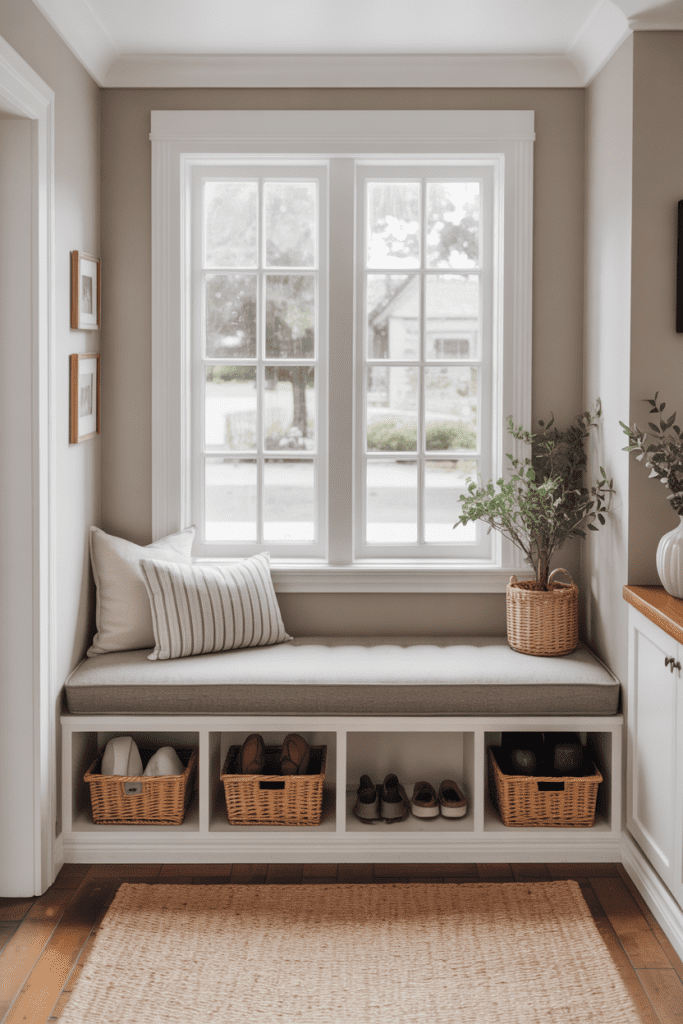
Consider adding hooks or a coat rack above the bench to create a complete entryway storage solution that keeps everything organized and within easy reach.
4. Statement Wall Treatment
Transform one wall in your foyer into a stunning focal point with special paint treatments, wallpaper, or architectural details. This approach works especially well when you want to add personality without overwhelming a small space.
Options include board and batten wall ideas for a classic look, bold wallpaper patterns for drama, or textured paint treatments for subtle sophistication. The key is choosing a treatment that complements your home’s overall style.
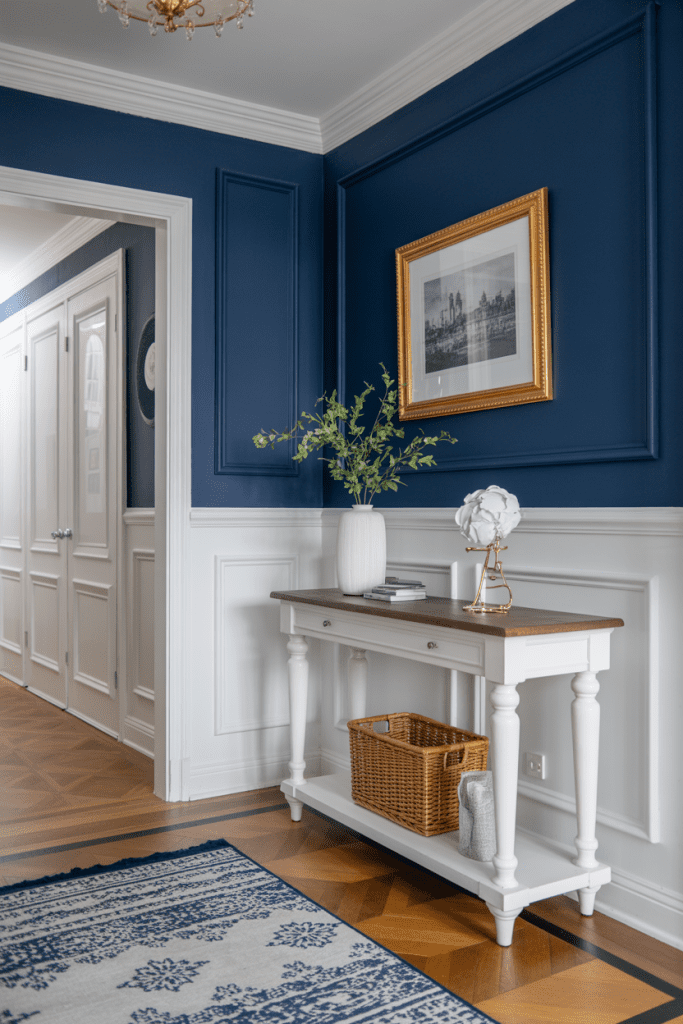
Keep the other walls neutral to prevent the space from feeling overwhelming, and use the statement wall as a backdrop for furniture and decorative elements.
5. Layered Lighting Design
Create a welcoming ambiance with layered lighting that combines ambient, task, and accent lighting. This approach ensures your foyer is well-lit for practical purposes while creating a warm, inviting atmosphere.
Combine overhead lighting like chandeliers or flush-mount fixtures with table lamps on console tables and perhaps wall sconces for additional ambient light. Consider dimmer switches to adjust the lighting based on time of day and occasion.
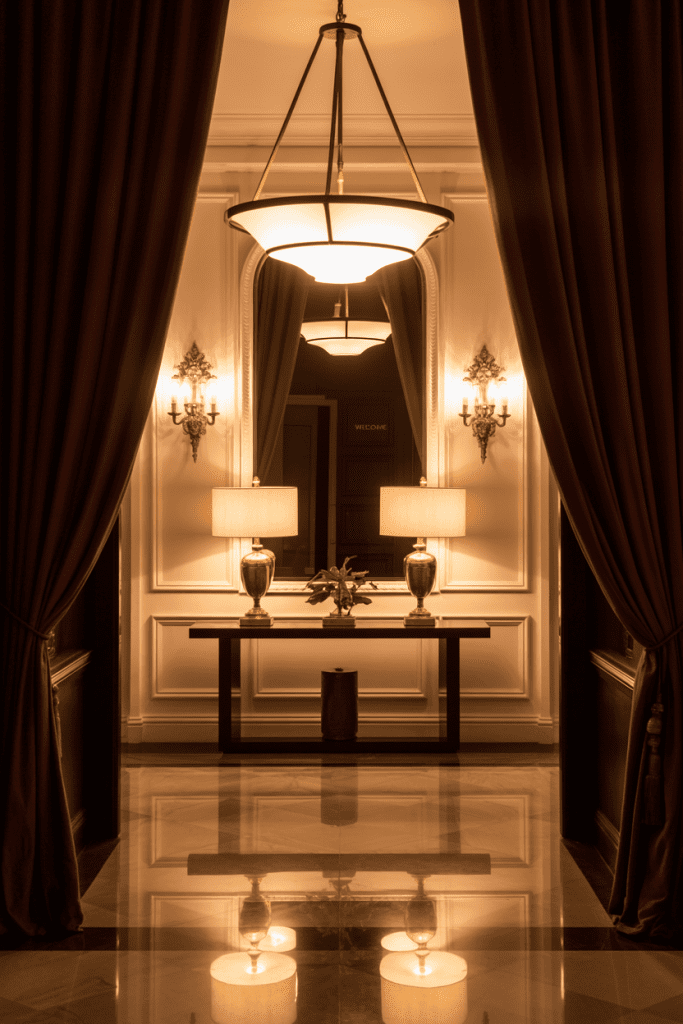
The goal is to eliminate dark corners while creating a pleasant, welcoming glow that makes guests feel comfortable as soon as they enter your home.
6. Artistic Gallery Wall
Transform your foyer into a personal art gallery with a carefully curated collection of artwork, photographs, and decorative objects. This approach adds personality and visual interest while showcasing your style preferences.
Mix different sizes and types of artwork for visual interest, but maintain consistency through frames, colors, or themes. Consider including family photos, travel memories, or pieces that reflect your hobbies and interests.
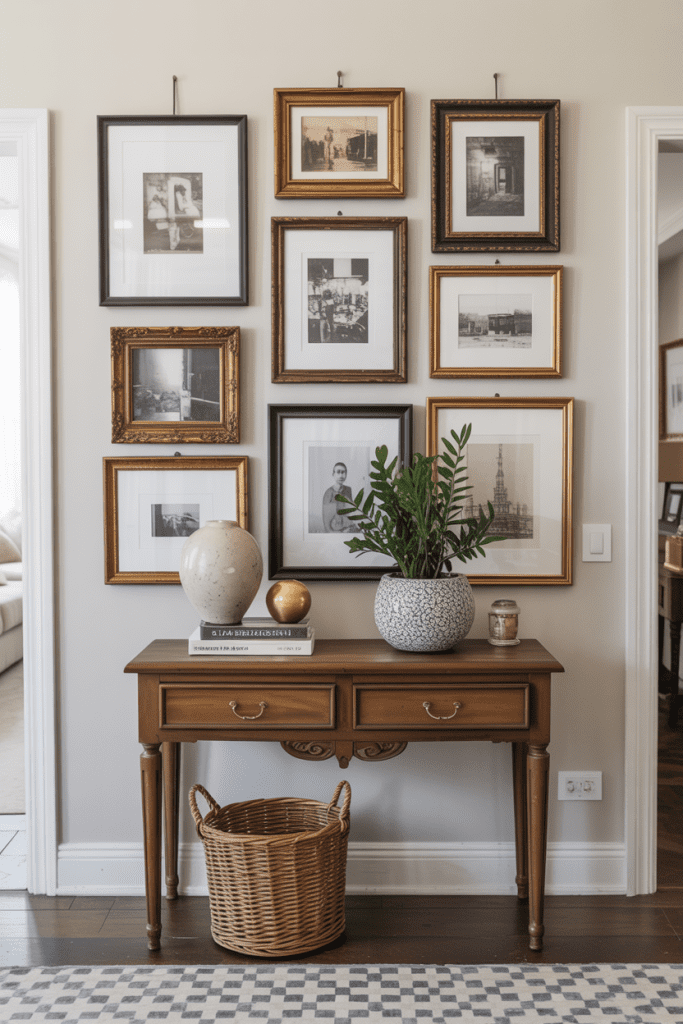
Plan your layout on the floor before hanging to ensure proper spacing and visual balance. The artwork should be hung at eye level, typically with centers around 57-60 inches from the floor.
7. Natural Elements and Plants
Bring life and freshness to your foyer with plants and natural elements. Greenery adds color, improves air quality, and creates a welcoming, organic feel that connects your interior with the outdoors.
Choose plants that can thrive in your foyer’s lighting conditions – low-light options like snake plants or pothos work well in dimmer spaces, while brighter foyers can support flowering plants or fiddle leaf figs.
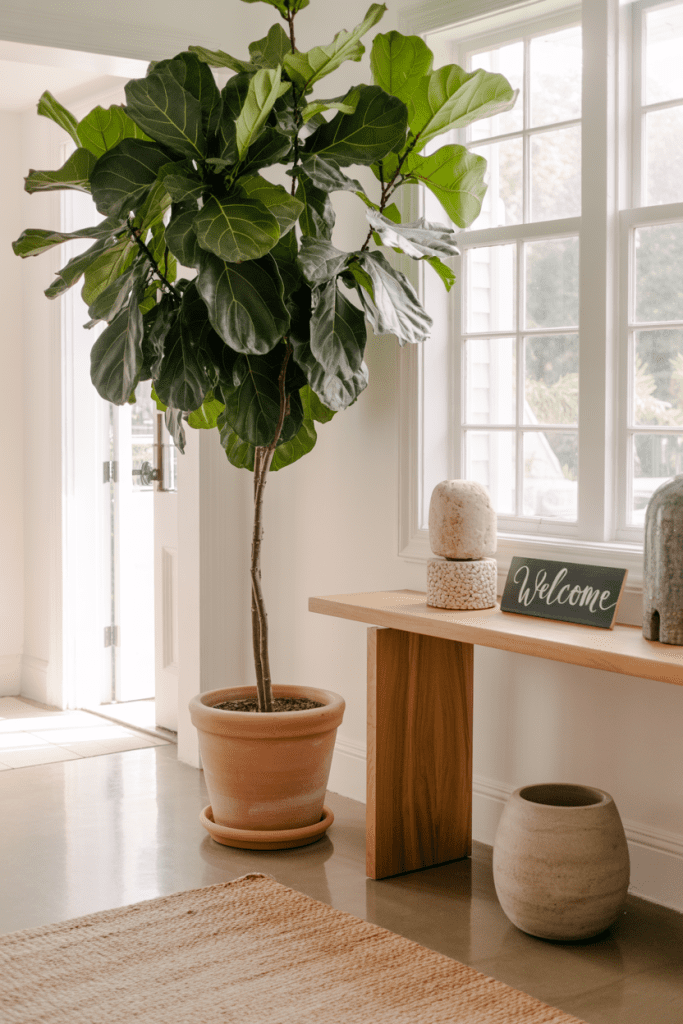
Incorporate other natural elements like wooden furniture, stone accessories, or woven baskets to reinforce the connection with nature.
8. Color Coordination with Adjacent Spaces
Ensure your foyer design flows seamlessly with adjacent areas by coordinating colors and design elements. This creates visual continuity and makes your home feel cohesive from the moment guests enter.
Take cues from your modern living room decor ideas or other nearby spaces, incorporating similar colors, textures, or design themes in your foyer. This doesn’t mean everything should match exactly, but there should be a harmonious relationship.
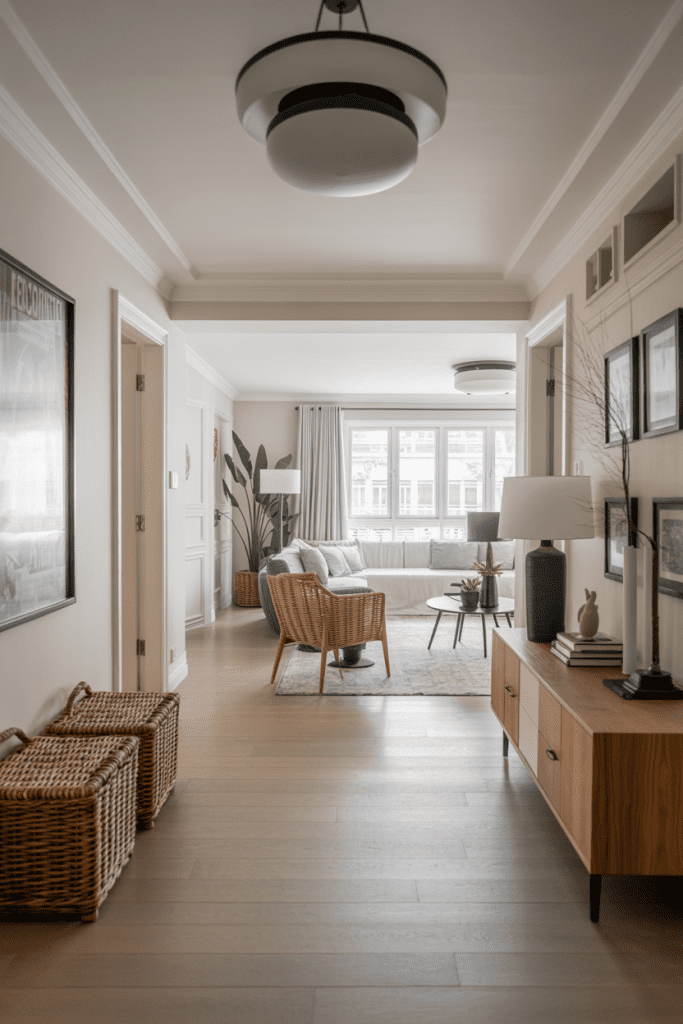
Use transitional elements like rugs, artwork, or furniture pieces that bridge the foyer with other areas, creating a natural flow throughout your home.
9. Functional Coat Storage Solutions
Design attractive storage solutions for coats, jackets, and outerwear that keep your foyer organized while maintaining its aesthetic appeal. This is especially important in climates where seasonal clothing storage is essential.
Options include elegant coat closets with beautiful doors, stylish coat racks or hooks, or built-in storage systems that blend seamlessly with your foyer design. The key is making storage accessible but not visually overwhelming.
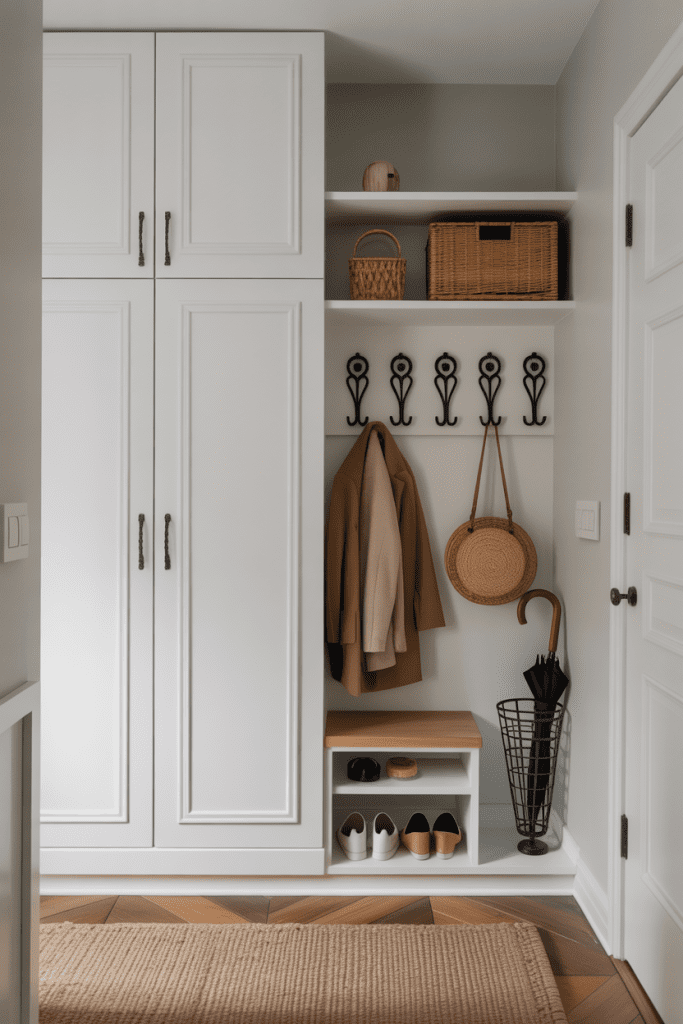
Consider different storage needs for different family members and seasons, ensuring everyone has designated space for their items in your foyer design.
10. Decorative Floor Treatments
Make a statement from the ground up with decorative flooring that adds pattern, texture, or color to your foyer. The floor is often overlooked but can significantly impact your entrance’s overall impression.
Options include patterned tiles, hardwood with decorative inlays, natural stone, or strategic use of area rugs to define the space and add comfort underfoot. Consider durability and maintenance requirements when choosing foyer flooring.

The foyer design flooring should complement your home’s overall style while being practical enough to handle daily traffic and occasional weather-related challenges. As HGTV’s design specialists recommend, durable materials like tile and stone work best in high-traffic entrance areas.
11. Seasonal Decoration Flexibility
Design your foyer with flexibility in mind, allowing you to easily update decorative elements for different seasons and holidays. This foyer design approach keeps your entrance feeling fresh and current throughout the year.
Create a foundation with permanent elements like furniture and lighting, then add seasonal touches through easily changeable items like flowers, pillows, artwork, or decorative objects. This approach works well with 15 fall porch ideas that can be adapted for indoor use.
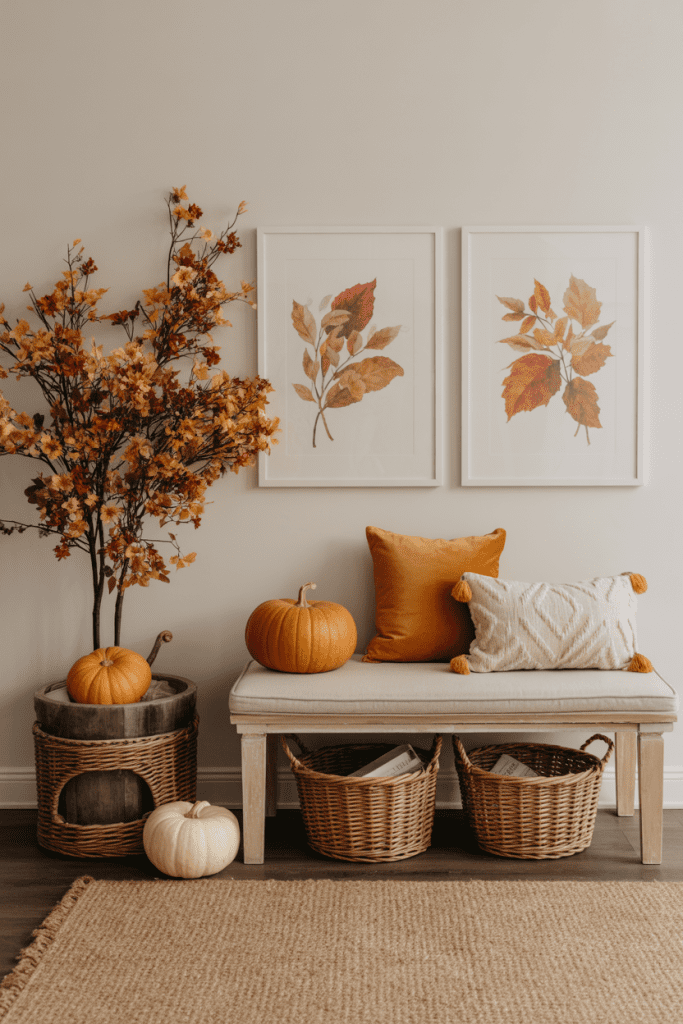
Keep seasonal decorations stored in easily accessible containers so you can quickly refresh your foyer’s look as seasons change.
12. Maximizing Small Foyer Spaces
Even the smallest foyer can be transformed into a stylish and functional entrance with smart design choices. Focus on vertical storage, light colors, and multi-functional furniture to make the most of limited space.
Use mirrors to create the illusion of more space, choose furniture with built-in storage, and keep decorative elements minimal but impactful. Light colors on walls and floors help small spaces feel larger and more open.

Remember that small doesn’t mean less stylish – carefully chosen elements can create just as much impact in a small foyer as in a large one.
13. Incorporating Technology
Modern foyer design can include technology integration for convenience and security. Smart doorbells, keyless entry systems, and charging stations can be seamlessly incorporated into your foyer design.
Hide technology elements when possible or choose options that complement your decor style. A small charging station in a console table drawer or a smart thermostat with an attractive design can add functionality without compromising aesthetics.
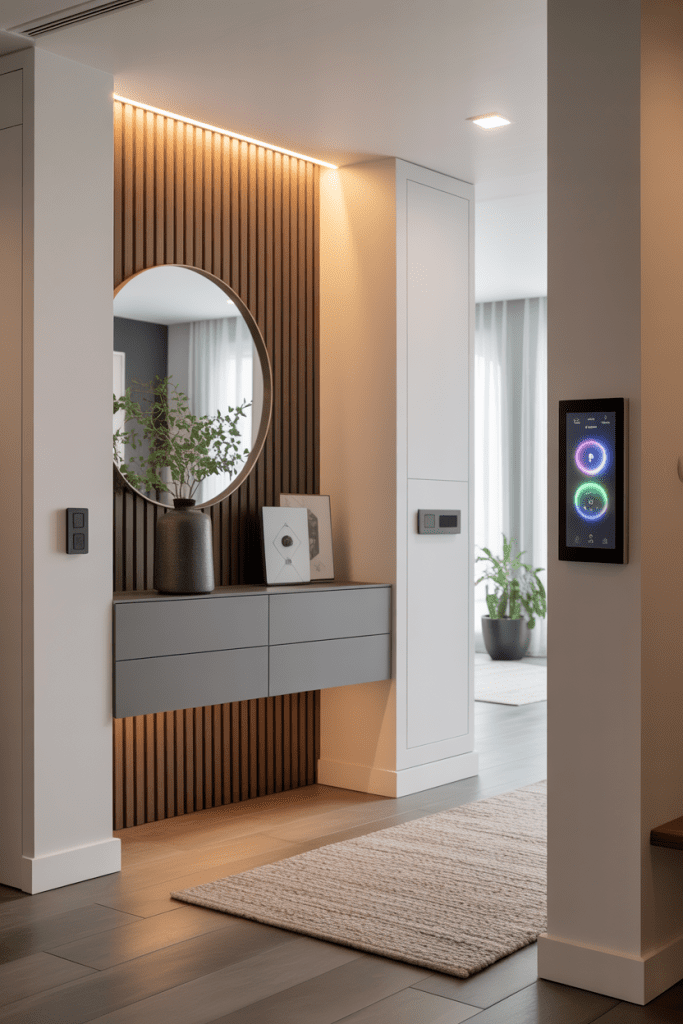
Consider your family’s technology needs and how they can be addressed while maintaining your foyer design’s visual appeal.
14. Creating Symmetry and Balance
Use principles of symmetry and balance to create a sense of order and elegance in your foyer design. This approach works particularly well in traditional and formal settings.
Arrange furniture and decorative elements in balanced compositions – matching lamps on either side of a console, symmetrical artwork arrangements, or paired planters flanking an entrance. This creates a sense of harmony and sophistication.
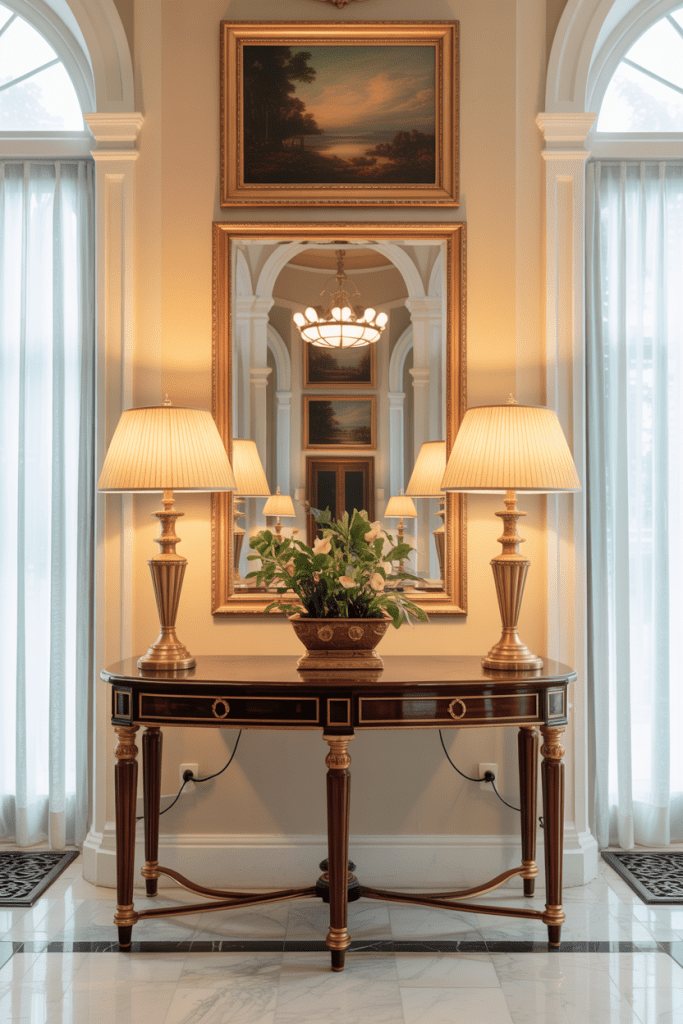
Even in asymmetrical layouts, you can achieve visual balance by distributing visual weight evenly throughout the space.
15. Multi-Purpose Functionality
Design your foyer to serve multiple purposes beyond just an entrance. This is particularly valuable in smaller homes where every space needs to work harder.
Consider how your foyer might double as a home office ideas space with a small desk area, or incorporate elements that connect with adjacent rooms’ functions. The key is maintaining the primary welcome function while adding useful secondary purposes.
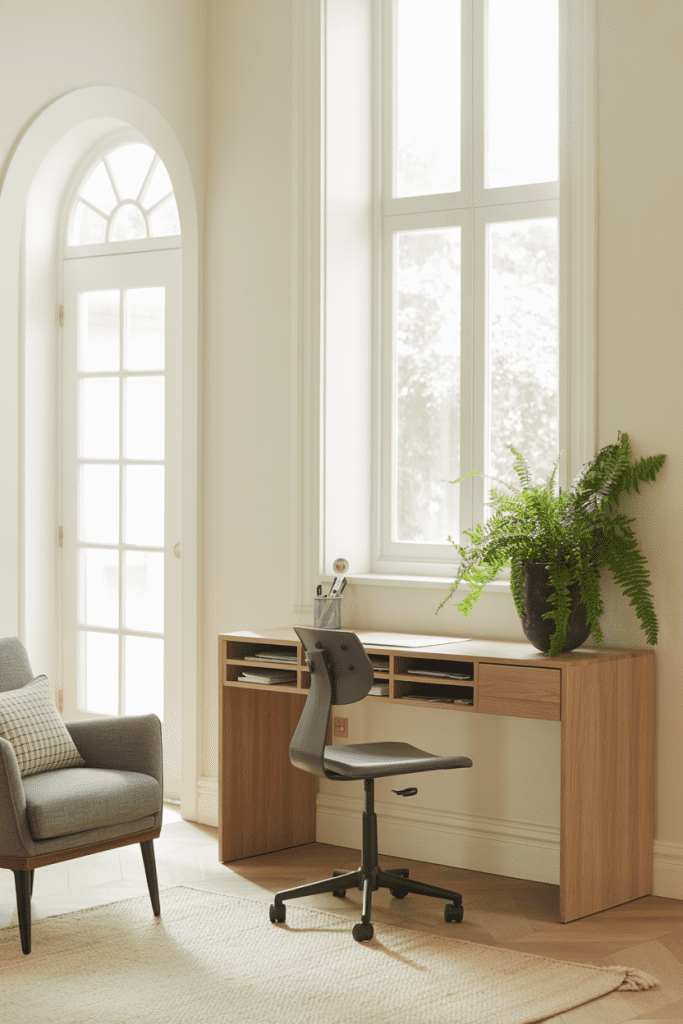
Ensure that additional functions don’t overwhelm the space or compromise its role as a welcoming entrance to your home.
Bringing Your Foyer Design Together
The best foyer design reflects your personal style while providing practical functionality for daily life. Whether you prefer the clean lines of Japandi interior ideas or the cozy charm of cottage decor ideas, your foyer design should feel authentically yours.
Start with the basics – good lighting, adequate storage, and a welcoming color scheme – then layer in personality through artwork, plants, and decorative objects. Remember that your foyer connects to other areas of your home, so consider how it relates to your kitchen remodel ideas or bathroom design ideas to create a cohesive overall design.
The most successful foyer design balances beauty with practicality, creating spaces that work well for everyday life while making guests feel welcome and impressed. Take time to plan your foyer design, considering both your family’s needs and the impression you want to make on visitors.
For additional inspiration on creating beautiful, functional spaces throughout your home, explore our guides on entryway table decor ideas and staircase ideas for stylish and functional home design.
Frequently Asked Questions
Q: What’s the ideal size for a foyer?
A: While foyer sizes vary greatly, a minimum of 6×6 feet provides adequate space for basic functionality. Larger homes often have foyers ranging from 8×10 to 12×15 feet or more. The key is proportional design that doesn’t overwhelm the space.
Q: How do I choose the right lighting for my foyer?
A: Consider ceiling height, natural light, and daily usage. High ceilings can accommodate chandeliers, while lower ceilings work better with flush-mount fixtures. Always include multiple light sources and consider dimmer switches for flexibility.
Q: What flooring works best in foyers?
A: Durable, easy-to-clean materials work best. Popular options include tile, natural stone, hardwood, or luxury vinyl. Consider slip resistance and maintenance requirements, especially in areas with wet weather.
Q: How can I make a small foyer feel larger?
A: Use light colors, add mirrors, maximize vertical space, and keep furniture minimal. Good lighting and strategic placement of decorative elements can also create the illusion of more space.
Q: Should my foyer match the rest of my home’s decor?
A: Your foyer should complement your home’s overall style while potentially serving as a preview of what’s to come. Maintain some design consistency but don’t be afraid to make the foyer special and memorable.
Q: What are essential items every foyer should have?
A: Basic essentials include good lighting, some form of storage (hooks, closet, or console), a mirror, and a way to contain outdoor elements like an umbrella stand or mat. Everything else depends on your specific needs and style.
Q: How often should I update my foyer decor?
A: While major elements like furniture and lighting might last years, smaller decorative elements can be updated seasonally or whenever you want a fresh look. This keeps the space feeling current without major expense.
Q: Can I DIY my foyer design or should I hire a professional? A: Many foyer updates can be DIY projects, especially decorating and minor updates. However, electrical work, major structural changes, or complex lighting installations should involve professionals for safety and quality results.

